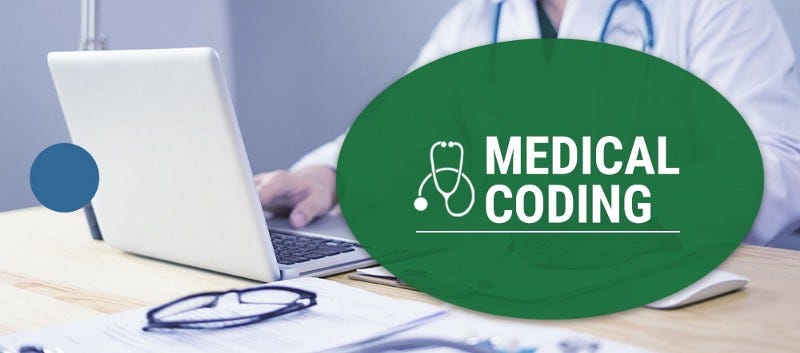Medical Coding Explained
Below I try to explain the codings used in the US HealthCare systems. These codes are mostly used by the providers for claims submission…
Below I try to explain the codings used in the US HealthCare systems. These codes are mostly used by the providers for claims submission and reimbursement. However, their use cases are not limited to receiving payment for healthcare services.
International Classification of Disease(ICD) 9/10
The World Health Organization (WHO) publishes the ICDs to standardize the methods of recording and tracking instances of diagnosed disease all over the world, making it possible to conduct research on diseases, their causes, and their treatments. The diagnose code can be either a disease, e.g. diabetes, or a symptom, e.g. cough, fever.
The 9th reversion of ICD was developed in 1979 and was used until 2015, when it eventually got replaced by the 10th revision on Oct. 1st 2015.
ICD-10 is very extensive and has far more codes than ICD-9 and applies to more users. It is intended to collect data on every type of healthcare encounter (e.g., inpatient, outpatient, hospice, home healthcare, and long- term care).
The real terms introduced by ICD system are ICD-9-CM, ICD-10-CM, and ICD-10-PCS. CM stands for clinical modification, and PCS stands for Procedure Classification System. PCS is used to classify procedures for inpatient records.
Current Procedural Terminology (CPT)
After getting the diagnosis, then the next question is what has been done for the diagnosis, and that is what CPT captures. It can be an X-ray, a surgery, etc.
CPT codes are also called HCPCS level I codes in the Medicare system. These codes are used for reporting medical services/procedures performed on patients in one of the following situations:
By providers in offices, clinics, and private homes
By providers in institutional settings such as hospitals, nursing facilities, and hospices
By a hospital outpatient department (e.g. ambulatory surgery, ER, and outpatient laboratory or radiologic studies)
CPT codes themselves are also categorized into three levels:
Category I : medical procedures/services identified by a five-digit CPT code and organized within six sections:
* Evaluation and Management (E/M) (99201–99499)* Anesthesia (00100–01999, 99100–99140)* Surgery (10021–69990)* Radiology (70010–79999)* Pathology and Laboratory (80047–89398)* Medicine Services and Procedures (90281–99199, 99500–99607)Category II: codes related to “evidence-based performance measurements” tracking
Category III: temporary codes related to “emerging technology”. These codes will be archived after five years unless added to the Category I
CPT codes in the insurance claims needs to be linked to ICD-10 codes to justify their need and be reimbursed. These codes are reviewed and updated by American Medical Association (AMA) once a year.
Diagnosis-Related Group (DRG)
It’s the system used to classify various diagnoses for inpatient hospital stays into groups and subgroups so that Medicare can accurately pay the hospital for a patient’s hospital stay. Insurers use DRG to pay the hospital a fixed amount rather than paying for all the services rendered by the hospitals.
Healthcare Common procedure Coding System (HCPCS)
It’s a collection of standardized codes that represent medical procedures, supplies, products and services. This collection is created by Centers for Medicare & Medicaid Services (CMS) partly because the CPT doesn’t cover all the procedures and there are new codes need to complement the CPT codes. Because of its usefulness, the other parties also use it in their system.
HCPCS (pronounced “hick-picks”) also include J codes. J codes codes start with letter “J” and are used by Medicare and other managed care organizations to identify injectable drugs that ordinarily cannot be self-administered, chemotherapy drugs, and some orally administered drugs.
Inpatient vs Outpatient
We can categorize codes based on their use in inpatient or outpatient setting.
For outpatient services/procedures, provided by HCP or HCO, below codes are used:
CPT Category I, II, and III
HCPCS level II (HCPCS level I actually are CPT codes)
And for inpatient services/procedures, provided by HCO:
ICD-10-PCS
Question: Is there any code-to-code mapping between ICD 9 and 10?
The answer is depends. Although CMS, each year, publishes general equivalence mappings (GEMs), which are translation dictionaries or crosswalks of codes that can be used to roughly identify ICD-10 codes for their ICD-9 equivalent codes, you should treat this mapping with a caution and keep in mind that in some codes, there are no line-to-line mapping. In some areas (e.g. obstetrics) entire chapters are organized according to a different classification, and translating between them can introduce a lot of complication and possibly wrong coding.
An important note about medical coding is that in some cases, the coding can get very complex, and it requires a deep understanding of the medicine to be able to decide which code captures the physician’s description of the disease. For this reason, coding is mostly done by professional medical coders who are trained and certified by American Health Information Management Association or American Academy of Professional Coders.
Final note, if you are interested to see what each individual code is, this website is a free resource to lookup each code: https://www.icd10data.com/
References:
* National Cancer Institute (here)
* Medical Coding Overview (here)
* ICD-10 Diagnosis Codes (here)
* ICD-9 Diagnosis and Procedure Codes (here)
* CPT codes (here)
* HCPCS Level II Codes (here)
* J Codes (here)
* ICD-10-PCS Procedure Codes (here)
* DRG Codes (here)





